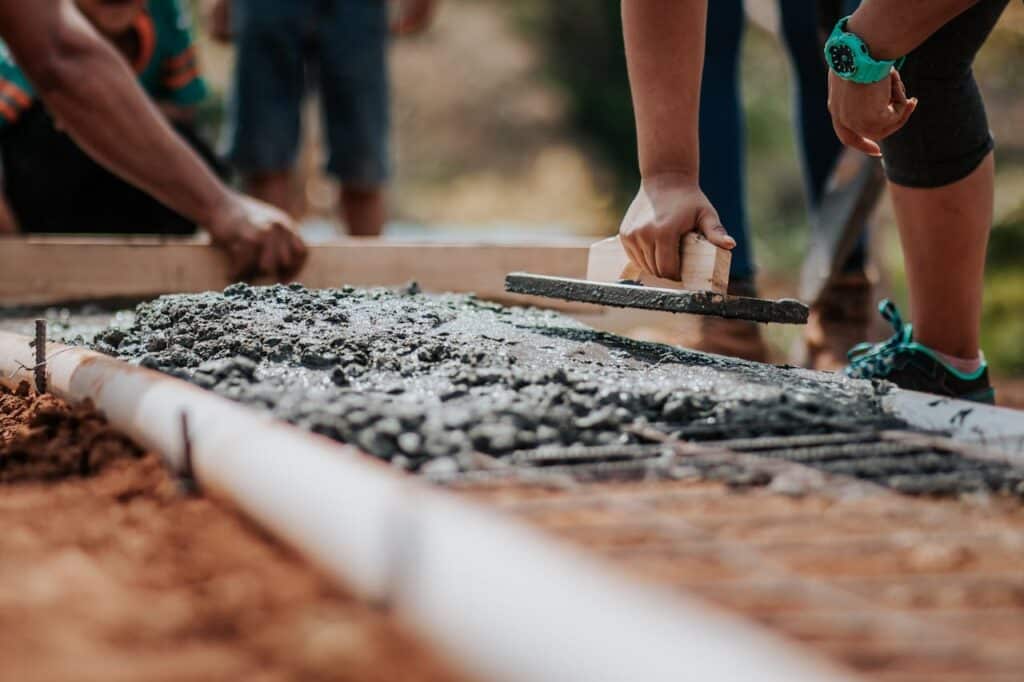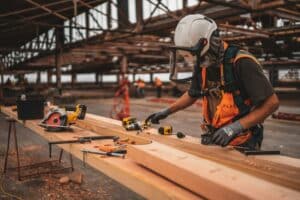Building a strong foundation is crucial when constructing homes and buildings in Koh Samui. The unique soil conditions and tropical climate require careful planning and execution. The strength of a building starts with understanding the ground it stands on. Different types of soil can significantly influence both the design and stability of a foundation. That’s why conducting a thorough soil test is a critical first step in any construction project.
Choosing the right type of foundation is another key factor in ensuring the longevity and safety of a building. Whether opting for slab, pile, or strip foundations, knowing their advantages and drawbacks can help you make informed decisions based on the specific needs of your project. Each foundation type interacts differently with the soil and can have varying strengths depending on the construction goals.
In addition, installing an efficient drainage system can protect your foundation from water damage, which is especially important in areas prone to heavy rains. By using quality materials and skilled labor, high construction standards are maintained, ensuring your foundation is built to withstand the test of time.
Understanding Soil Conditions in Koh Samui
In Koh Samui, understanding the soil conditions is essential for constructing strong and lasting foundations. Different soil types play a significant role in determining the design and stability of foundations. For example, sandy soils provide good drainage, which helps prevent moisture accumulation but might require additional support to bear heavy loads. Clay soils, on the other hand, can retain water and expand or contract, posing challenges to foundation stability. This can lead to cracks and structural issues if not addressed correctly.
Conducting thorough soil tests before starting construction is crucial. Soil tests help identify the type of soil on your site, its load-bearing capacity, and any potential issues that might arise, such as water retention or soil movement. These tests allow builders to choose the right type of foundation and construction method to address the specific soil conditions, ensuring the safety and durability of the building.
By understanding the soil conditions, builders can design foundations that accommodate the natural environment of Koh Samui, preventing future problems and safeguarding investments. This planning step is essential for ensuring that the structure will be safe and stable for years to come.
Choosing the Right Foundation Type
Selecting the appropriate foundation type is a crucial step in building a strong structure in Koh Samui. The choice often depends on the soil conditions, the building’s design, and its intended use. Here are some common foundation types used in the region:
- Slab Foundations: These are flat concrete slabs poured directly on the ground. They are suitable for areas with stable soil and with minimal movement. Pros include being cost-effective and quick to construct. However, they offer limited support for heavy structures and are less effective on sloped surfaces.
- Pile Foundations: Piles are long, slender columns driven deep into the ground to reach more stable soil layers. They are ideal for areas with weak or shifting soil. Their main advantage is providing strong support for heavy loads. The downside is that pile foundations can be more expensive and require specialized equipment for installation.
- Strip Foundations: These involve a continuous strip of concrete that supports walls. They are commonly used for buildings with load-bearing walls. Their benefits include being relatively simple to construct and offering good support for light to medium structures. However, they require careful design to handle soil variations.
Each type of foundation comes with its set of advantages and potential drawbacks. By carefully evaluating and selecting the right foundation, builders can ensure the structure’s strength and resilience, adapting to the specific conditions and requirements of each construction project in Koh Samui.
Implementing Effective Drainage Systems
Drainage systems play a crucial role in maintaining a strong foundation, especially in a tropical climate like Koh Samui’s, where heavy rain can be a regular occurrence. Poor drainage can lead to water accumulation around the foundation, increasing the risk of erosion, seepage, and foundation instability. To avoid these problems, it’s essential to design and install drainage systems that efficiently divert water away from your building.
One effective strategy is to create a sloped landscape around the foundation. By grading the soil so that it slopes away from your home, you can naturally direct water away from the structure. Additionally, installing gutters and downspouts is vital for channeling rainwater away from the roof and foundation. Make sure downspouts extend at least several feet from the home’s base to minimize water pooling nearby.
French drains, which consist of a trench filled with gravel and a perforated pipe, are also a popular choice for directing water away from areas prone to flooding. Lastly, consider using drainage mats along the foundation walls. These mats provide an extra layer of protection by ensuring water doesn’t linger near the foundation. Implementing these solutions can greatly reduce the risk of water-related foundation issues, ensuring the long-term stability of your building.
Ensuring Quality Construction Practices
Quality construction practices are essential for developing strong and lasting foundations. Pouring concrete correctly is one of the most crucial aspects of this process. It involves using the correct mix of materials and ensuring that the concrete is poured evenly and cured properly. Uniform curing prevents cracking and ensures strength. Reinforcement through rebar or steel mesh is another important practice that adds structural integrity to the foundation.
It’s crucial to hire skilled labor with experience in foundation work. Workers should be trained in the best practices for mixing and pouring concrete, as well as in the use of reinforcement techniques. Using high-quality materials is another key factor. Good-quality concrete and reinforcement materials help ensure that the foundation can withstand various environmental pressures over time.
Monitoring the construction process through frequent inspections ensures that everything is done correctly and according to plan. This quality assurance helps catch potential issues early and ensures that the finished foundation will be strong and reliable. Investing in skilled workers and superior materials will pay off in the long run by enhancing the durability and safety of your building.
Conclusion
Building in Thailand comes with its set of challenges, but these can be navigated successfully with the right approach. Understanding the nuances of local regulations, choosing suitable materials, and implementing effective drainage systems are foundational steps in creating a safe structure. By embracing quality construction practices and staying informed about potential issues, you can ensure that your building project not only meets but exceeds standards of durability and safety.
For anyone looking to embark on building projects in Koh Samui, the peace of mind that comes from careful planning and execution cannot be overstated. Navigating these elements skillfully will not only protect your investment but also create a living or working space that is comfortable and resilient.
Considering building a new home or project in Koh Samui? Let CJ Samui Builders guide you through the process with expertise and dedication. Our team is equipped to help you avoid common pitfalls and deliver a structure that stands the test of time. Contact us today to discuss your plans and discover how our architectural services can bring your vision to life with precision and care.




